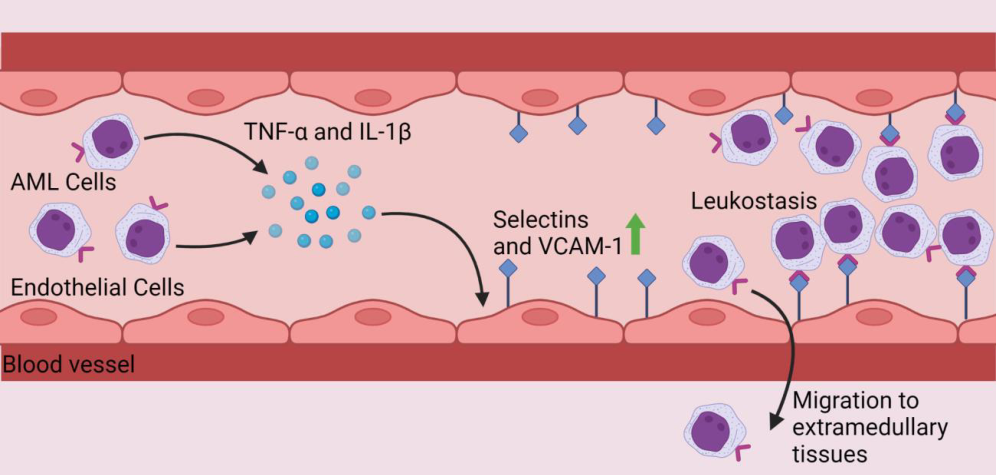Acute myeloid leukemia (AML) remains highly resistant to treatment with a high relapse rate, necessitating the development of new therapeutic strategies. Integrin-targeted therapy, which has been extensively studied in solid tumors and other diseases, has been rarely explored in hematological malignancies such as AML. However, there is significant evidence supporting the role of integrins in cell adhesion-mediated drug resistance (CAM-DR) in AML.
In a recent review article titled “Targeting integrins in drug resistant acute myeloid leukemia” published in the British Journal of Pharmacology, researchers from the University of Southern California summarized the role of integrins in CAM-DR and provided an overview of the progress in integrin-targeted strategies in solid tumors and AML.
The prognosis for AML remains poor, highlighting the need of novel treatment approaches. The bone marrow (BM) microenvironment not only interacts with normal hematopoietic stem cells (HSCs) but also with leukemia cells, including AML cells. Within the BM microenvironment, various adhesion molecules, particularly integrins, have garnered interest.
AML cells express integrins that interact with ligands in the microenvironment, leading to the adhesion of leukemia cells to the microenvironment and activation of intracellular signaling pathways associated with cell migration, proliferation, survival, and drug resistance. This phenomenon is known as CAM-DR.
To overcome CAM-DR, identifying and targeting integrins in AML to disrupt their interaction with the microenvironment has been proposed as a strategy. In this review, the researchers focused on the bone marrow microenvironment, summarizing the role of integrins in CAM-DR and discussing integrin-targeted strategies in AML.
Cell adhesion molecules (CAMs) are surface molecules on cells that interact with ligands on other cells or the extracellular matrix (ECM). Previous studies have implicated CAMs, including CXCR4, selectins, and cadherins, in CAM-DR in leukemia and the microenvironment.
Mounting evidence suggests that integrins play a significant role in the prognosis, biology, and drug resistance of AML. This review supports the notion that integrins are indeed crucial for the interaction between AML cells and the microenvironment that supports CAM-DR and may serve as adverse prognostic markers.
The AML study described here highlights the importance of integrin signaling in poor prognosis and inferior patient survival, and inhibiting integrins may increase AML sensitivity to other treatments. Further research is needed to evaluate the expression of integrins on AML cells and the surrounding microenvironmental niche of AML cells.
Reference
1. Ogana, Heather A., et al. “Targeting integrins in drug‐resistant acute myeloid leukaemia.” British Journal of Pharmacology 181.2 (2024): 295-316.

